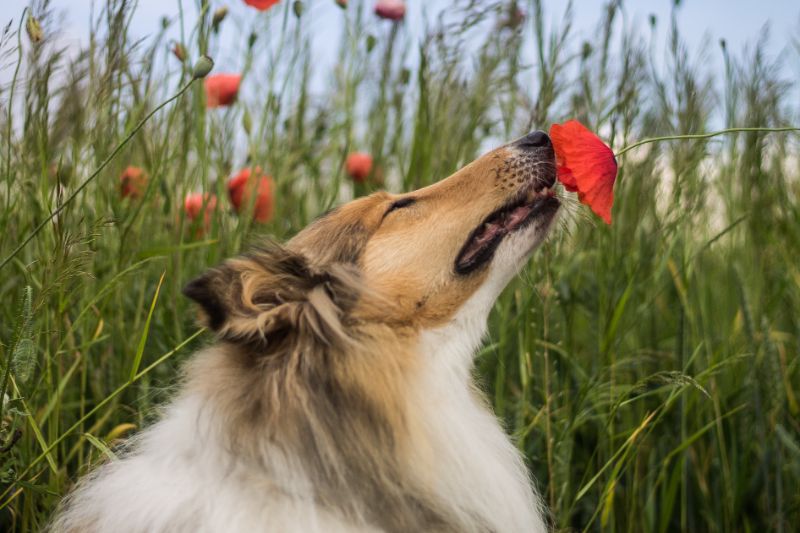Recognizing the Symptoms of Pollen Allergies in Pets

If your pet has been scratching more or biting at their paws, they may be experiencing what most of us experience in spring… seasonal allergies.
Pollen allergies in pets may not always look like what we would expect, with lots of sneezing and coughing we experience with allergies. Chronic itching can make life miserable for our furry friends, which is why it is important to learn the symptoms, so we can get your pet the right treatment.
The team at Leon Valley Veterinary Hospital is here with some suggestions for identifying and treating allergies. Our aim is to get your pet feeling better in no time.
The Signs of Pollen Allergies in Pets
Your dog or cat may not walk around with a box of Kleenex, but pets do experience an array of allergic reactions to things in bloom this time of year.
Pollen allergies are one of the more common forms of allergies in pets, and it is estimated that up to ten percent of pets have some form of allergies. During spring through fall, these allergies are often at the peak.
Here are some of the signs your pet is experiencing pollen allergies:
- Scratching – If your pet has experienced increased scratching, especially after they have been outdoors, this is one of the most telling signs of allergies.
- Skin disorders – Along with hot spots, hives, dry skin, and oozing wounds, skin problems are usually linked to a form of allergy. This is especially true in dogs.
- Puffiness and discharge from the eyes – Seasonal allergies result in itchiness of the eyes, including increased watering as the eye is attempting to cleanse itself. Puffiness usually results from your pet rubbing their face.
- Inflammation and odor from the ears – Allergies will impact the ears, too, causing more frequent ear infections. These infections cause a yeasty or bad smell around your pet’s ear canal.
- Head shaking – Because your dog or cat’s ears are being affected, they will attempt to shake the head to alleviate the itchiness.
- Sneezing – Sneezing, wheezing, or coughing is also a telltale sign of allergies or another respiratory infection.
In general, your pet may also not feel lor behave like themself. They may sleep more or have trouble getting comfortable due to itchiness. Their appetite may be reduced and in some allergic pets, vomiting or diarrhea can accompany the disorder.
Helping Your Pet Cope with Allergies
The first step to take to help your pet is to have them diagnosed, so that we can better understand the allergens or other issues causing the symptoms. In many cases, we offer overall physical assessment, blood work, as well as allergy testing to diagnose.
Some pets are helped through supplements, such as Omega-3 fatty acids, as well as medications like steroids and antibiotics if there is an infection. Over the counter medications like Benadryl should only be used under supervision by your veterinarian.
At home you can also take certain steps to rescue the allergens that are causing your pet discomfort.
- Shampoo them once a week using a hypoallergenic shampoo and conditioner.
- Wipe the paws and feet with a warm washcloth after returning from the outdoors.
- Launder pet beds and blankets often.
- Use a variety of air filters around the home and keep the windows closed.
If we can answer any additional questions about pollen allergies in pets, or if you would like to schedule an appointment, please contact us.


